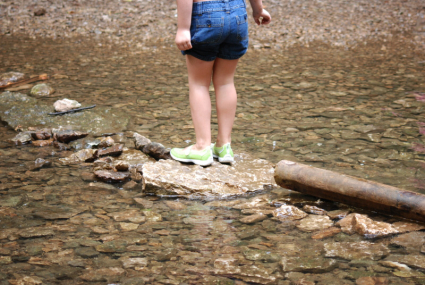Busy working lives leading to lack of free time together with the practicalities of living in towns and cities means that many of us aren’t able to see as much wildlife as we’d ideally like. And whilst many of us long to be surrounded by more nature, this is particularly so for children.
Not only can introducing children to nature early on foster a real sense of the fragility and importance of the natural world around us, but it can make an incredibly fun day out for children of all ages.
But if many of us don’t have the time to sit in a bird hide for hours on end, or go tracking wild deer through the forests, are there still ways for us to see wildlife without having to put in too much time and effort? Fortunately, the answer is yes.
Today we’re going to look at five simple ways that you (and your kids) can have a wildlife experience to remember, with minimal investment of your free time or money.
Pond Dipping
A simple net available from many outdoor or pet stores, a cat litter tray or some jam jars to put your findings into and you’re away.
All you need to do is to locate a local body of water – whether that’s a stream, river or best of all a pond. In these areas you may find frogs, newts, beetles and a whole host of other invertebrates from caddis fly larvae to dragonfly nymphs.
Take an identification book out with you and within no time at all you’ll be finding all sorts of exciting wildlife and learning more about them.
Beating
Numerous insects use our native plants as food sources or places to hide but actually creeping around looking for them can be a struggle. After all, a range of predators are looking for them too, so they put a lot of effort into concealing themselves.
So what’s the solution? Quite simply, beating.
Simply find a tree or bush, place an old white sheet on the floor beneath it and then hit it hard with a stout stick a few times. The vibrations will cause all sorts of mini beasts to drop out where they can be easily identified using a small magnifying glass and a book.
Birdwatching
When it comes to bird watching, many of us think of long walks in the country or sitting in a bird hide for hours on end but it doesn’t have to be like that.
Not only are there a range of nature reserves specifically designed to make it easy to see a range of different birds, but you can even attract them into your own garden with ease.
Setting up a bird table and some feeders takes next to no time and soon enough you will have all sorts of birds from around your neighborhood stopping off for a bite to eat.
Simply pull up a chair a safe distance away, and keep watch.
Rockpooling
As the tide goes out on rocky beaches, rook pools form. These little oases of life trap all sorts of sea creatures such as urchins, sea anemones and crabs where they can be easily found. You might even get lucky and see some fish or even an octopus.
All you need to do is to find a local rocky beach where the water can collect and then time your visit for low tide. A small net can be handy for catching what you find before placing it into a bucket of sea water to identify.
Log Turning
Logs represent a fantastic habitat for a range of animals from newts and lizards down to millipedes and centipedes. Under a log it is damp and dark; a perfect place for our more sensitive native wildlife.
And logs can be found in all sorts of places. Some people leave log piles at the end of their garden while many forests offer the exact same habitat.
The trick is to find these logs, and then roll them *towards* you. This way the log is always between you and the wildlife so if anything scary starts scurrying you know you’re safe! Also, you may need to be quick to catch whatever you find so try to have some plastic tubs ready to do the honours.
Lastly, when you’ve finished with any of these techniques, please make sure you release all wildlife back into it’s habitat safely and ensure that it is exactly as it was when you arrived. This means returning logs to their original position, ensuring you have any rubbish with you and so on.
——————————————————-
A guest post by Richard, the owner of Eco Living Advice which offers regularly-updated tips and information on creating a more sustainable lifestyle.



Great ideas!!
Thanks for sharing this with us.
I think one of the best outdoor activities to do with kids is geocaching!! This gets them out in nature and gives them an incredible sense of adventure! You would be surpised how many geocaches exist in every neighborhood.